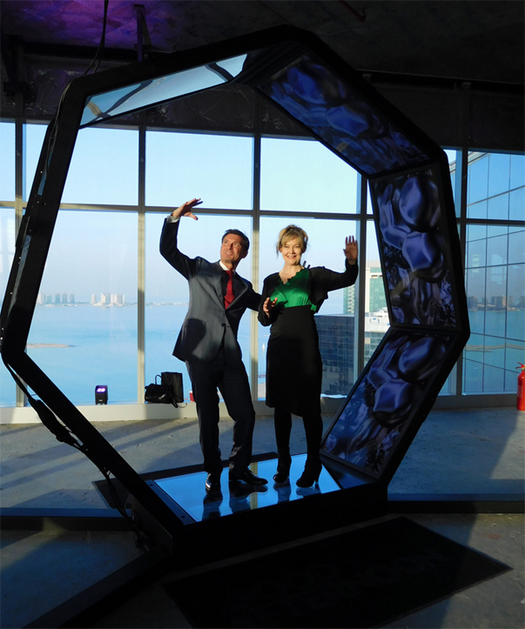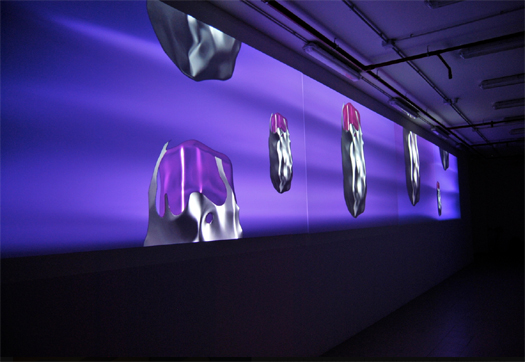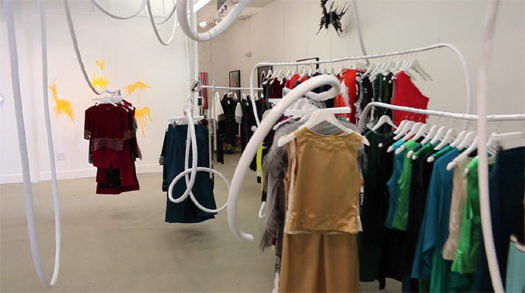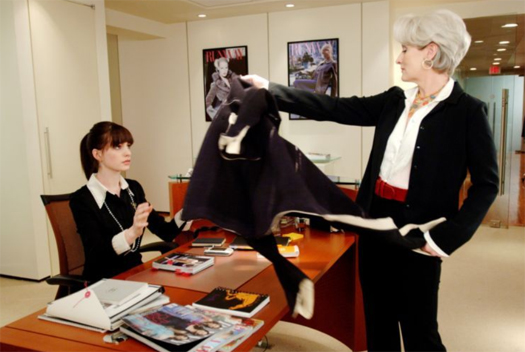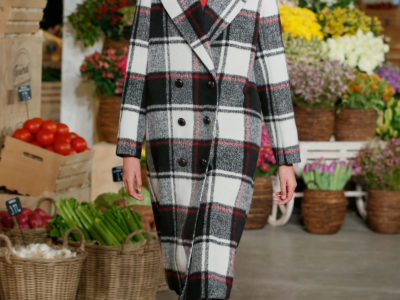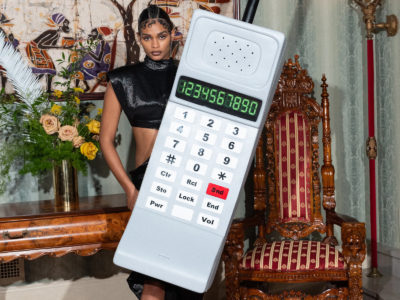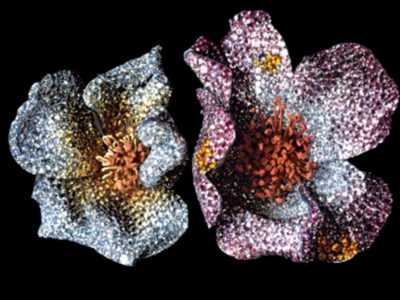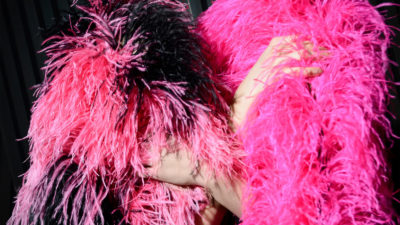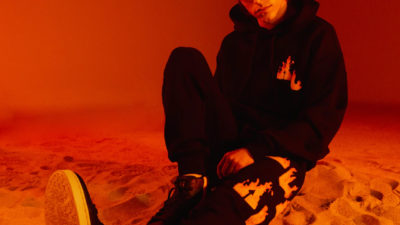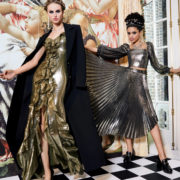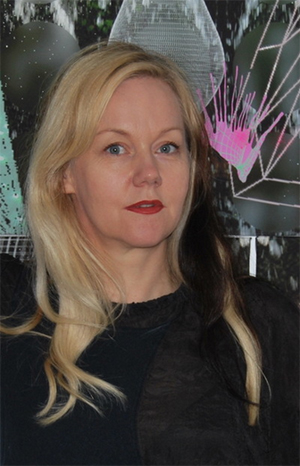 After making her debut as a painter in 1980, the Norwegian-born artist soon moved into interdisciplinary art strategies, incorporating emerging technologies and unexplored media into her artworks to create new hybrids from a wide variety of mediums. Nominated by VOGUE as one of the 40 most important designers in the world, MYrvoLD’s pieces reflect her depiction of contemporary reality and urban life as well as how humans deal with emotions and technological advances. Her exhibition, HYBRID LOVE opened at the B.A.D. Space Gallery in San Francisco on April 28th. It explores MYrvoLD’s diversity of skills as an artist, including her reproduced couture designs, art carpets, wall sculptures as multi-surface installations, and more. It’s definitely a great honor that this very important artist shared some of her vision with Fashionality’s readers!
After making her debut as a painter in 1980, the Norwegian-born artist soon moved into interdisciplinary art strategies, incorporating emerging technologies and unexplored media into her artworks to create new hybrids from a wide variety of mediums. Nominated by VOGUE as one of the 40 most important designers in the world, MYrvoLD’s pieces reflect her depiction of contemporary reality and urban life as well as how humans deal with emotions and technological advances. Her exhibition, HYBRID LOVE opened at the B.A.D. Space Gallery in San Francisco on April 28th. It explores MYrvoLD’s diversity of skills as an artist, including her reproduced couture designs, art carpets, wall sculptures as multi-surface installations, and more. It’s definitely a great honor that this very important artist shared some of her vision with Fashionality’s readers!
Elena: What’s your conceptual approach to fashion denotes about the possibility of giving artistic value to wearable things? Do you think that fashion can be art?
PM: My first discipline is painting, and in the beginning of my career I started working with an interdisciplinary approach. I had started making my own clothes when I was 9 years old, and had discovered that the clothes I made for myself carried messages that interested other people, they would talk and react to me depending on what I was wearing. I wanted to include fashion as a medium – parallel and equal to the other disciplines in this philosophy – and spent 10 years on the syndic of French fashion designers, using fashion as a medium to transmit art and philosophical ideas into the mainstream. Like everything else, fashion can be art, but a lot of fashion is not art.
Elena: Do you believe in trends and fashion influencers?
PM: Fashion evolves in every culture, and is different from tribe to tribe. Recently in Doha, Qatar, I was showed the recent fashion of the local women there, who dress in their full-covering outfits. Discovering their fashion point of view connected me to these women. Archeologists will look for sign of fashion, cloth, weaves, hairpins, to find out how people lived and as indication of a sophistication of a society. My first project in Paris in 1994 was a collection of dresses made from plastic bags and logos from every day life in Paris, suggesting that fashion is what we do everyday. I am not interested in false ideas of fashion – the projection made by the industry that does not inform or bring cultural value to the customers.
Elena: Will handmade and Couture survive over the next decade or be wiped out by the sheer force of fast fashion and technology?
PM: Handmade and couture has to a large extent been wiped out already. That was one of the reasons I created cybercouture in Paris end of the 90’s: to protect the local culture of know-how, when everyone moved production to China. Yet, like with the foodies, there is a growing awareness of the value of craftmanship and the necessity to preserve knowledge. The ARCHIVE collection is about that, and having it produced locally in San Francisco was one of the main goals of Breanna. This ties into building an awareness and supporting local industry: ensuring our lives do not flatten to just be a consumer identity.
Elena: Creating ‘intelligent clothing’, are you responding to existing needs or exposing new ones for the modern woman?
PM: I have made my own clothing since my childhood and am still doing that. I like the fact that I take care of one aspect of my life: my clothes, and make it into my own skin, taste and story. Many other women like what I make and the collections I have made; this comes from sharing what I like to wear myself. Sometimes I also make conceptual garments that create a visual momentum and transcends into performance art. Caring for oneself and how one looks is a real gift to the community. I believe in this giving by using décor and creativity in how you present yourself to the community. When you say “intelligent clothing,” I think about how I work with a garment as a 3D sculpture designed for movement. It revolves around the axis that every person has though gravity. I love it when clothes inspire the awareness of this axis and the understanding of one’s own volume and movement.
Elena: What’s the prime ambition and goal you have set for each of your ‘experiences’ and artistic collaborations you are sharing with your audience?
PM: All my projects have one essential message: creativity. I think everything can be solved through creative people, and it is my job as an artist to show how to implement oneself creatively in everyday local culture. I have worked with the idea of art interfaces for 25 years, thinking of the coding and programs. Essentially it is about building cultural value into every situation, both sustainable and ethically, but with aesthetics that involve play, learning and sensory experience.
Elena: Your work is interdisciplinary and to a great extent digital. How complicated is that in practice? How demanding in terms of research?
PM: I have now worked 37 years nonstop as an interdisciplinary artist, from painting, sculpture, video, sound, electronics, textile, design, architecture, urban planning, 3D animation, Virtual Reality and in addition I am a producer, curator and handle the business. I guess you could say my skill level involves 7 –10 master degrees. Knowledge is very important but nothing can beat practice. The new tools made available through digital media are incredibly potent. We are now advancing visual language into the 11th, 12th and 13th art form. And if you want to know what is going on today, one has to get involved with these tools.
Elena: Can you explain us the basic parameters of your Archive and Hybrid Love project in collaboration with Breanna de Geere of B.A.D. Space gallery in San Francisco?
PM: Hybrid Love is about this universe, the links between the surfaces in my multi-surface artworks that appear on paintings, videos, interactive interfaces, videos and clothes. It describes my work but also our times, with innovation largely being hybrid sets of information gathered in new combinations. Even socially, the title reflects the new realities of love, family and procreation, we are living in a new age.
Elena: You’ve been internationally acclaimed, published, and exhibited. Which of your achievements do you deem as your most important one?
PM: The large immersive and interactive solo exhibition ART AVATAR shown in Centre Pompidou in 2014 was a milestone for me, both in terms of the institutional prestige, and also that I could compile a series of ideas of the last 20 years into a large show like that. In ART AVATAR, I built a replica of the exhibition space as a mirror, and people could make a sculpture in VR that would move around the virtual space when they moved around in the real space. This year, I was invited to The New York Times The Future of Art conference on Doha, with artists like Jeff Koons and Marina Abramovic. It was great to be in this forum speaking as a recognized leader in my field, along with large installations set up for the conference: the interactive WANDS sculptures, and the immersive STARGATE.
Elena: How do you translate ‘avant-garde’ in your own terms?
PM: The director of innovation at IBM Norway, Thomas Angelero, recently called me a futurist, and I think it clicked for me, explaining why my art is so different from much of the consumer art we see: works that look good, but just repeat what a few primary artists have developed 50 or 100 years ago. So the new avant-garde is the futurists, the artists that can work with interdisciplinary approaches though art that benefits culture and the challenges that societies face.
Elena: Which realities or thoughts trigger your imagination?
PM: Everything in all situations can trigger my imagination. I am so creative that it can be annoying for people around me who just want a normal day.
Elena: Were your Nordic origins influential in the ways you approach design? What was already in your DNA before becoming an artist?
PM: I consider myself a bit of a modern day Viking, I have had to be very strong and endure a lot of humiliations by sticking with my ideas. Without a will to go on, I could not have done this and gone my own way, against so many conventions.
Elena: Today we see conglomerates and a powerful commercial spirit dictating many decisions across the fashion and entertainment industries. Is there still space for pure creativity?
PM: Creativity is becoming more and more valuable, companies and content development depend on it. It is the difference between a mediocre film and a great one. It always amazes me when I meet directors and people in leadership position, how little vision they possess. They succeed as managers because of positions, politics, people skills and manipulations. But at the end of the day, their companies or cities will die or slow down, without the creative impulses.
Elena: Did you have mentors and idols that inspired and guided you through your artistic journey?
PM: I have always read and followed creative contributors in all fields, I also have worked alongside great talents. I was really sad now when Zaha Hadid died, because as a woman she shattered that thick glass ceiling that hands out worse odds to women to succeed in the art world. Having her there as an icon was inspirational and safe, now we all have to push ahead without her, and on some level I feel more vulnerable.
The B.A.D. Space Gallery – and HYBRID LOVE – will be open to the public through June 26 at 2360 3rd Street in San Francisco. I really hope you loved this very interesting discussion and hope you can make it to the exhibit too!
Love!!!
Elena Sendona


